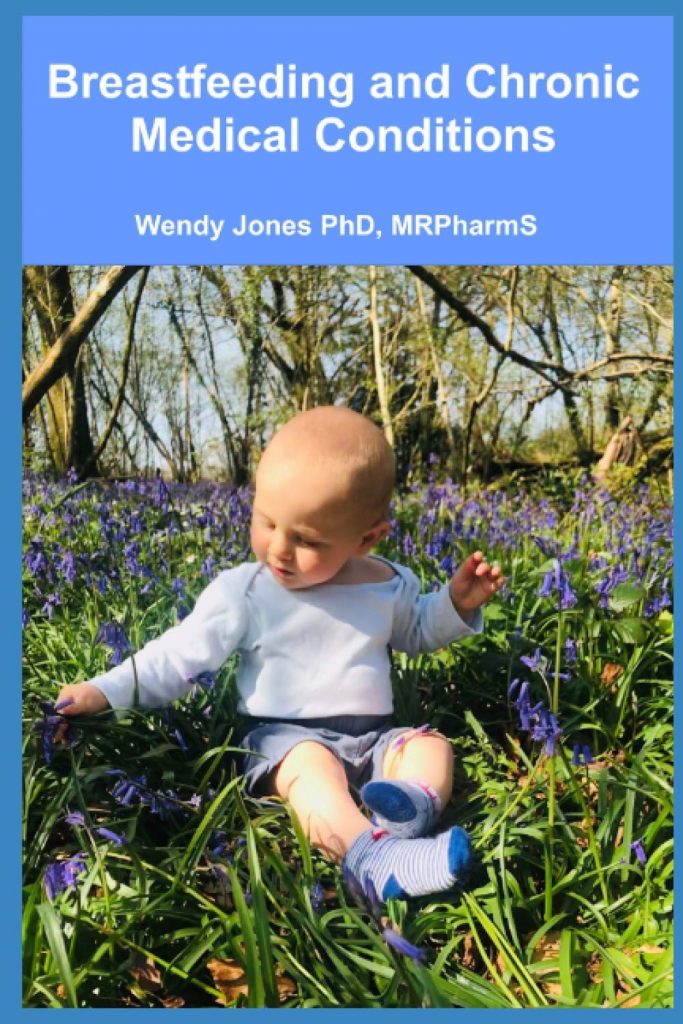Information taken from Breastfeeding and Chronic Medical Conditions available from Amazon
“in the early stages when getting used to feeding I found I had to keep snacks handy to avoid having hypos but apart from that everything went well. I had to be determined due to the added energy being used and the normal fatigue I get but having hoped to get to 6 weeks we’re now 24 months and still feeding.”
Description
Type 1 diabetes usually first develops in children or young adults. In the UK about 1 in 300 people develop type 1 diabetes at some stage. Itusually develops quite quickly, over days or weeks. Type 1 diabetes is an auto-immune disease caused by the destruction of the insulin producing beta cells in the pancreas. There is a genetic component in the development, but it is triggered by environmental factors such as early introduction of cow’s milk protein, viral infections, and exposure to toxins.
Symptoms of type 1 diabetes are excessive thirst, frequent passing of urine, extreme tiredness, and dramatic weight loss. Untreated or poorly controlled diabetes leads to damage to the eyes, feet, nerves, kidneys, and increased risk of coronary heart disease. With treatment and monitoring these effects can be minimised.
If insulin levels are unstable in pregnancy the baby may be born large for dates. Miscarriage, pre‑eclampsia and preterm labour are more common in women with pre‑existing diabetes. Folic acid supplements 5mg a day should be taken before conception and for the first 3 months of pregnancy.
Mothers with Type 1 diabetes are less likely to breastfeed (77% vs 86%) and those who do continue for a shorter duration (12 vs 17 weeks) (Hummel 2007). Fasting blood sugars are lower during exclusive breastfeeding. Milk production may be limited with unstable insulin levels. There is a period of hypoglycaemia after delivery following which Insulin requirements may be reduced by 27% (Davies 1989), In another study (Whichelow 1983) diabetic mothers increased their carbohydrate intake by 50g whilst breastfeeding whilst requiring 40 units insulin compared with 45 units pre-pregnancy. Immediately after delivery carbohydrate snacks should be available and glucose tablets to counteract any hypoglycaemia. Mothers should be reminded to have snacks available during night-time feeds and to monitor blood glucose levels if necessary, in order to adjust insulin requirements
Alves (2012) studied 123 children with type 1 diabetes and their siblings as case controls. Whilst there was no difference between breastfeeding, those children with type 1 diabetes were breastfed for a shorter time (3.3 vs 4.6 months) and were exposed to cow’s milk earlier than their siblings.
Mothers with diabetes are at risk of developing pre-eclampsia and should take 75 mg aspirin daily from 12 weeks’ pregnancy until delivery. Infants born to diabetic mothers have a 25–40% incidence of hypoglycaemia in the first one to two hours after delivery (Chertok 2009). This is transient and resolves spontaneously. Mothers with diabetes may have delayed lactogenesis II. Perez-Bravo et al. (1996) suggested that the risk of a child developing diabetes is 13 times higher if a susceptible infant is exposed to cow’s milk protein in the first three–four hours after delivery. The DAME (Diabetes and Antenatal Milk Expressing 2017) study provided evidence that providing the baby with previously expressed and stored colostrum rather than infant formula or oral glucose did not increase the risk of admission to NICU and is therefore preferable. This is also true for mothers with gestational diabetes or type 2 diabetes managed by insulin in pregnancy.
Treatment
Insulin is safe for use by breastfeeding mothers as the molecule is too large to pass into breastmilk (molecular weight > 6000). It has no hypoglycaemic effect from oral absorption as it is inactivated in the gastrointestinal tract. Thus, it would not be expected to exert any action on the infant’s glycaemic control. Breastfeeding may lower a woman’s insulin requirements by up to 30%. To prevent hypoglycaemic attacks, mothers may need to increase their carbohydrate intake or decrease their insulin dose.
During pregnancy and breastfeeding, insulin requirements may be altered, and doses should be assessed frequently by an experienced diabetes physician as well as by regular monitoring. The dose of insulin generally needs to be increased in the second and third trimesters of pregnancy.
References
- Alves JG, Figueiroa JN, Meneses J, Alves GV. Breastfeeding protects against type 1 diabetes mellitus: a case-sibling study. Breastfeed Med. 2012 Feb;7(1):25-8
- Chertok IRA, Raz I, Shoham I et al Effects of early breastfeeding on neonatal glucose levels of term infants born to women with gestational diabetes. J Hum Nutr Diet 2009;22(2): 166-9
- Davies RR, McEwen J, Moreland TA, Durnin C, Newton RW. Improvement in morning hyperglycaemia with basal human ultratard and prandial human actrapid insulin–a comparison of injection regimens. Diabetic Medicine 1988; 5:671-5.
- Foster, DA, et al (2017), Advising women with diabetes in pregnancy to express breastmilk in late pregnancy (Diabetes and Antenatal Milk Expressing [DAME]): a multicentre, unblinded, randomised controlled trial. The Lancet, DOI: http://dx.doi.org/10.1016/S0140-6736(17)31373-9
- Pérez-Bravo F, Carrasco E, Gutierrez-López MD, Martínez MT, López G, García de los Rios M, Genetic predisposition and environmental factors leading to the development of insulin-dependent diabetes mellitus in Chilean children, J Mol Med, 1996;74(2):105–9.
- S. Hummel C. Winkler S. Schoen A. Knopff S. Marienfeld E. Bonifacio A. G. Ziegler. Breastfeeding habits in families with Type 1 diabetes. Diabetic Med. 2007; 24 (6): 671-676
- Whichelow MJ, Doddridge MC. Lactation in diabetic women. Br Med J (Clin Res Ed) 1983;3;287(6393):649–650.
